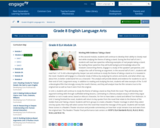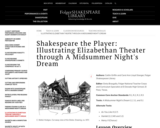
CSDE Model Curricula Quick Start GuideEquitable and Inclusive Curriculum The CSDE believes in providing a set of conditions where learners are repositioned at the center of curricula planning and design. Curricula, from a culturally responsive perspective, require intentional planning for diversity, equity, and inclusion in the development of units and implementation of lessons. It is critical to develop a learning environment that is relevant to and reflective of students’ social, cultural, and linguistic experiences to effectively connect their culturally and community-based knowledge to the class. Begin by connecting what is known about students’ cognitive and interdisciplinary diversity to the learning of the unit. Opposed to starting instructional planning with gaps in students’ knowledge, plan from an asset-based perspective by starting from students’ strengths. In doing so, curricula’s implementation will be grounded in instruction that engages, motivates, and supports the intellectual capacity of all students.Course Description: In the English Language Arts Model Curriculum, there is a balance of informational and literary reading and writing types across the grade levels. In addition to developing students’ abilities to read and comprehend a variety of texts, it is equally important to devote adequate time to engage students in producing clear and coherent writing. Included in each of the units are the Speaking and Listening Standards and the Language Standards, which are essential for supporting the development of reading and writing skills and abilities. Through purposeful interactions, students will actively engage in rigorous conversations, refine speaking and listening skills, and build their knowledge of language structures. In this course, students will engage with narrative texts to analyze key ideas and details of narrative stories, specifically to determine what makes an interesting and engaging story. Students will study authors’ considerations regarding characters' points of view and perspectives, and how those elements function together with the audience to create effects such as suspense and humor. Students will analyze how information and ideas appear in various formats, including multi-media, and how to distinguish the underlying motives of those presentations (e.g., the central theme, and the purpose behind the words). This course also serves to advance students’ skills with argument writing and begins with evaluating an author’s argument, recognizing when the evidence presented in the text is irrelevant and unsound based on the claims made by the author. Students will learn to identify inaccuracies and recognize when an author’s perspective is influencing aspects of the argument. Near the end of the course, students will conduct short research projects based on a focused question and demonstrate understanding through the presentation of the inquiry topic. Students will be expected to gather data and other relevant information from credible sources both online and in print to answer a research question, add to the topic in engaging and relevant ways, use resources to inform direct quotes or to paraphrase, and use the appropriate citation and format style (e.g., Modern Language Association, American Psychological Association, Chicago Manual of Style) to avoid plagiarism. Aligned Core Programs: The Connecticut State Department of Education (CSDE) in partnership with the State Education Resource Center has engaged with providers of high-quality instructional resources to develop alignment guidance for the CSDE English Language Arts (ELA) Model Curricula. The guidance documents provide information about how instructional content aligns with and supports the implementation of the CSDE ELA Model Curricula. The instructional materials referenced in the alignment guidance documents meet the expectations as a core comprehensive resource as determined and reported by EdReports. Use of the instructional materials from these publishers is not required, as the selection of instructional materials is a local decision. If your resources are not listed below, you are encouraged to review EdReports to ensure the alignment of your instructional materials to the Connecticut Core Standards. Strong alignment of instructional materials to the CSDE ELA Model Curricula units has the potential to support student engagement with meaningful grade-appropriate content. Additional Course Information: Incorporated in each of the English Language Arts Model Curriculum units are the Writing Standards, with the expectation that adequate instructional time will be devoted to engaging students in producing and publishing various types of writing. Students need time to perform the intellectual work required for composing, which includes talking about their ideas, analyzing information, and organizing and presenting thoughts precisely and accurately. Developing the ability to analyze author’s craft requires multiple opportunities to engage with texts, so that students can apply literary devices and techniques in writing and make decisions around text structure and language use. When considering writing instruction, it is essential to give attention to the language skills (e.g., spelling, vocabulary, background knowledge, syntax) that directly contribute to writing production. Although writing needs dedicated instructional time, each unit supports an integrated approach to writing instruction by including complementary Speaking and Listening Standards, and Language Standards in service to the writing demands called for in each unit.Students will benefit from additional guidance during writing instruction, especially when spelling, word choice retrieval, fluently generating ideas, and executive functions are challenging. For example, working at the sentence level can help students develop the skills to compose complete compound and complex sentences, and use coordinating, correlative, and subordinating conjunctions in their writing. Sentence expansion activities can support students in writing with greater precision and accuracy. To produce lengthier pieces of writing, students may need support working through the planning and prewriting stages of the writing process and applying specific writing strategies. We must also be mindful of how executive function influences a writer’s capacity to work through the multiple steps and tasks of composing text, and the ability to sustain tasks and efforts to produce the many forms of writing. Navigating linguistically complex texts when conducting research projects and understanding and managing selective attention demands, including in working memory, may require additional scaffolds.Habits of Mind/SEIH/Transferable Skills Addressed in the Course: The integration of social, emotional, and intellectual habits is an important component in a K-12 education and contributes to students’ academic and personal success, and success in college, careers, and civic life. Social, emotional, and intellectual habits set the stage for all future learning, promoting intrapersonal, interpersonal, and cognitive competence. Adult beliefs and mindsets, as well as school experiences, all influence the development of social, emotional, and intellectual competencies (The Education Trust). Since adults are responsible for establishing and sustaining student-centered, inclusive learning environments, they must first take stock of their strengths for establishing and maintaining healthy relationships with adults and students, including individuals across different perspectives and backgrounds (Collaborative for Academic, Social, and Emotional Learning [CASEL], n.d.). By understanding and applying social, emotional, and intellectual habits, students effectively negotiate daily tasks and challenges. Social, emotional, and intellectual habits assist students in setting and achieving positive goals, establishing and maintaining healthy relationships, and making responsible decisions. In addition, they support students’ ability to maintain focus and manage their learning irrespective of obstacles. Students must have the capacity to integrate social, emotional, and intellectual skills, attitudes, and behaviors throughout the course of the day.Embedded within each of the English Language Arts Model Curriculum units are the interrelated social, emotional, and intellectual habits, as provided in the Components of Social, Emotional and Intellectual Habits: Kindergarten through Grade 12 document. These habits, over time, will contribute to students’ academic and personal success and are exemplified as areas of development (e.g., identify and understand emotions of self and others; develop logic and reasoning), further organized by learning continua (e.g., empathy; critical and analytical thinking), and clarified by categories of indicators of evidence or developmental milestones (e.g., acknowledge needs of others and act accordingly; agree or disagree with others and give reasons why). By understanding how respect, empathy, responsible behavior, and other social, emotional, and intellectual habits support rapport building, educators can foster trusting relationships with and among students so that each student feels connected and cared for as a member of the classroom community. This sets the stage for all future learning by minimizing the types of social interactions that can activate threats in the brain and impede students’ sense of agency. Students are then empowered to practice self-management and other skills and competencies within their social context (Hammond, 2015).Collaborative for Academic, Social, and Emotional Learning (CASEL). (n.d.). How Does SEL Support Educational Equity And Excellence?: Imagine A School Community That Fully Supports Students’ Learning And Development So That All Children Can Thrive. Fundamentals of SELHammond, Z. (2015). Culturally Responsive Teaching and the Brain: Promoting Authentic Engagement and Rigor among Culturally and Linguistically Diverse Students. Thousand Oaks, CA: Corwin.The Education Trust. (August 2020). Social, Emotional, and Academic Development through an Equity
- Subject:
- English Language Arts
- Material Type:
- Full Course
- Provider:
- CT State Department of Education
- Provider Set:
- CSDE - Public
- Date Added:
- 12/05/2023

